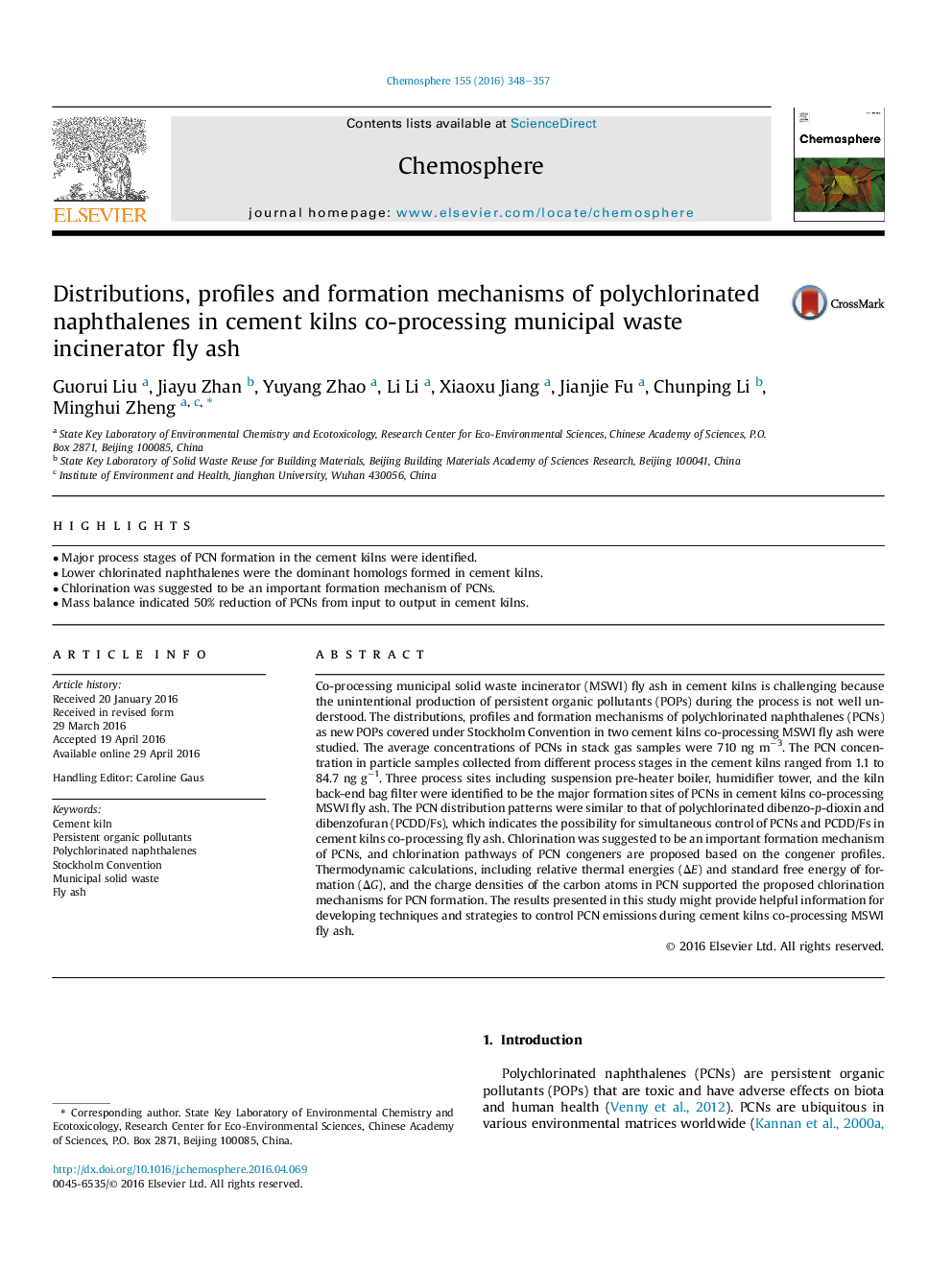| کد مقاله | کد نشریه | سال انتشار | مقاله انگلیسی | نسخه تمام متن |
|---|---|---|---|---|
| 4407499 | 1618816 | 2016 | 10 صفحه PDF | دانلود رایگان |
• Major process stages of PCN formation in the cement kilns were identified.
• Lower chlorinated naphthalenes were the dominant homologs formed in cement kilns.
• Chlorination was suggested to be an important formation mechanism of PCNs.
• Mass balance indicated 50% reduction of PCNs from input to output in cement kilns.
Co-processing municipal solid waste incinerator (MSWI) fly ash in cement kilns is challenging because the unintentional production of persistent organic pollutants (POPs) during the process is not well understood. The distributions, profiles and formation mechanisms of polychlorinated naphthalenes (PCNs) as new POPs covered under Stockholm Convention in two cement kilns co-processing MSWI fly ash were studied. The average concentrations of PCNs in stack gas samples were 710 ng m−3. The PCN concentration in particle samples collected from different process stages in the cement kilns ranged from 1.1 to 84.7 ng g−1. Three process sites including suspension pre-heater boiler, humidifier tower, and the kiln back-end bag filter were identified to be the major formation sites of PCNs in cement kilns co-processing MSWI fly ash. The PCN distribution patterns were similar to that of polychlorinated dibenzo-p-dioxin and dibenzofuran (PCDD/Fs), which indicates the possibility for simultaneous control of PCNs and PCDD/Fs in cement kilns co-processing fly ash. Chlorination was suggested to be an important formation mechanism of PCNs, and chlorination pathways of PCN congeners are proposed based on the congener profiles. Thermodynamic calculations, including relative thermal energies (ΔE) and standard free energy of formation (ΔG), and the charge densities of the carbon atoms in PCN supported the proposed chlorination mechanisms for PCN formation. The results presented in this study might provide helpful information for developing techniques and strategies to control PCN emissions during cement kilns co-processing MSWI fly ash.
Journal: Chemosphere - Volume 155, July 2016, Pages 348–357
